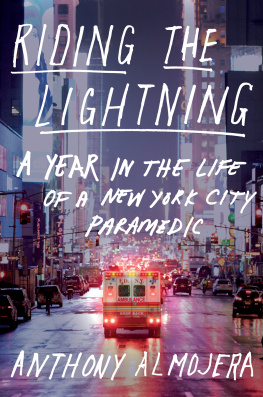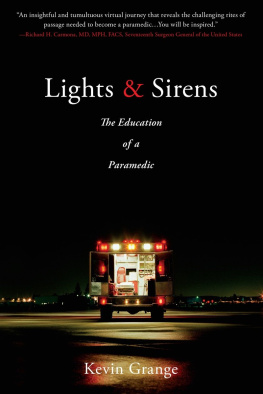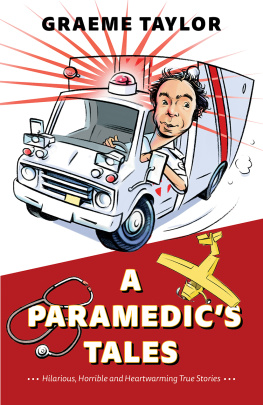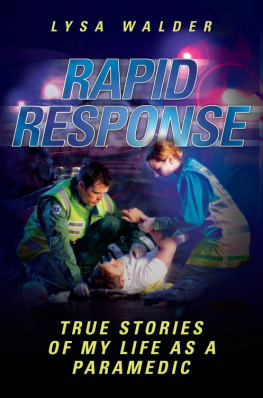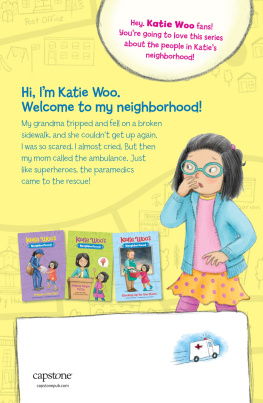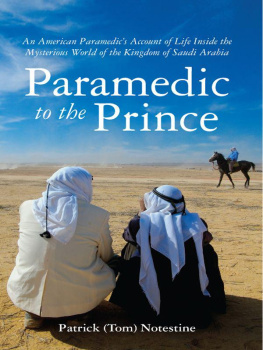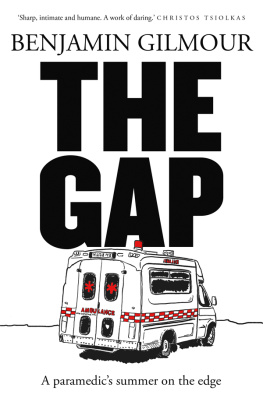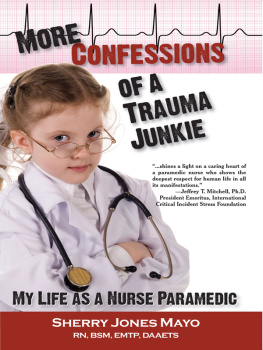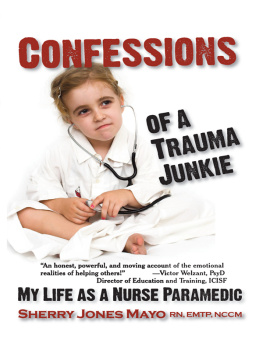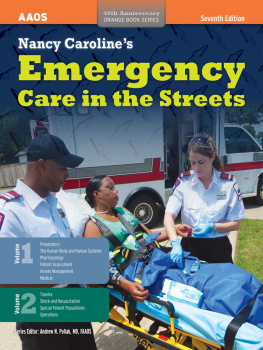Contents
Guide
To broken people everywhere
The story that follows represents my views and not those of the Fire Department of the City of New York or its emergency medical services. It is based on interviews and other research as well as my own records and recollection. Out of respect for peoples privacy, I have changed the names and identifying details of certain patients. Otherwise, the people, places, events, and dialogue described in the book are accurate to the best of my knowledge. Any errors are mine alone.
Very early one Sunday in March 2020, I parked my crimson EMS truck outside a brick house in Sheepshead Bay. The neighborhood is on the southern edge of Brooklyn, right by the ocean. When I was a kid, it was full of Russian and Jewish families, but now there are people from all overformer Soviet states, Asia. Its a cultural mishmash. During normal times, after a call in this neighborhood Id swing by Randazzos Clam Bar and pick up a cup of chowder.
But these were not normal times.
An ambulance had reached the scene first and stopped just outside the house. Two paramedics were climbing out. I put on a gown and gloves and a surgical mask and followed the medicsalso gowned and maskedaround the side of the house to an apartment on the ground floor. The front door had been left ajar, which is what 911 dispatchers tell callers to do. We stepped inside.
A woman lay unconscious on the floor of the living room. She was petite and had straight dark hair and she wore a white blouse or nightgown of some sort. She looked like she was from the Philippines, like my grandfather.
A man was kneeling beside her. He also looked Filipino. He wore green scrubs. He had a slight build, but he was pumping the womans chest with precise, strong movements. Most nonmedical people dont compress the chest as deeply as necessary when they perform CPR. Its hard to do, and it can be brutal; you have to push with so much force that you can crack the sternum. But this guy clearly knew what he was doing.
The crew got down on the floor and took over CPR. The guy stood up and turned to me. The woman was his wife, he said. She had been sick for about five days. Shed been spiking fevers and coughing, and her chest hurt. The couple had not been tested for COVID-19, the man said, but the woman worked at a nursing home in Coney Island, so he figured she probably had the virus. I agreed.
The husband told me that he worked at a nearby hospital. He had stayed home for the past few days to look after his wife. But the night before, the hospital had called. They were slammed, the guy said. They begged me to come in. I didnt want to leave her. But she said that she would be okay. She told me not to worry about her, that I should go to work.
He held his palm to his forehead and closed his eyes.
When I got home, she wasnt breathing, he said.
By then, an emergency medical technician crew had arrived. The EMTs were helping the paramedics from the first ambulance work up the patient (that is, perform CPR and give medications). There wasnt a lot of space in the room, so the husband stepped outside.
One of the paramedics put a bag-valve maska device for ventilating an unconscious patientover the patients nose and mouth. Her partner placed three electrode pads, white pads with colored cables, on the patients chest so we could get a three-lead EKG. The cables were connected to a defibrillator with a cardiac monitor that showed the heart rhythm.
The womans heart was in asystolemeaning there was no heartbeat, no indication of electrical activity.
We started an IV and gave the patient an amp of epinephrine, which increases blood flow to vital organs. All the while, we continued CPR. The woman had been unconscious and possibly not breathing for at least twenty minutes before we arrived. But we wanted to keep blood flowing through her body in case there was a chance that she could be saved.
I called telemetryonline medical controlto discuss medication with the physician on duty. Telemetry physicians help direct emergency medical care in the field. They authorize the use of certain medications and make the call on when to pronounce a patient dead.
The physician ordered doses of sodium bicarbonate and calcium chloride. Sodium bicarbonate lowers the acidity of the blood, which often rises during cardiac arrest, and calcium can help the heart beat more forcefully. We normally administer these drugs only when epinephrine and CPR arent working. If the patient doesnt respond to these medications, theres nothing more we can do.
We continued CPR for ten minutes or so. We stopped every two minutes to check the patients heart rhythm and have a new person take over CPR so no one became too tired to do it properly. We were looking for electrical activity on the monitor. Even better, a pulsea sign that the heart had begun to pump again.
But there was nothing.
We worked on the patient for half an hour. Maybe fifty minutes had passed since her husband had found her unconscious. She wasnt responding to treatment. We were not going to save her.
I called telemetry again, this time to get permission to pronounce her. The physician gave me a time of death.
I stepped outside. The husband was pacing on the driveway next to a small sedan. My mouth felt dry. He had been forced to choose between caring for strangers and staying home to nurse the person he loved most in the world. He had gone to work, and his wife had died alone.
Could he have saved her if he had been home? Perhaps. A patient who receives CPR immediately after collapsing has a far better chance of survival than someone who doesnt, even if the delay is just a few minutes. If the husband had been home, hed have been able to keep his wifes blood flowing while he waited for us to arrive. That might have been enough. Might not have. Hed never know.
The man and his wife could have been any of us, I thoughtany of the emergency medical technicians and paramedics and nurses and doctors who were risking infection from the coronavirus every day. Any of us could wind up dead on the living-room floor. For my part, I live alone. If I got COVID and my heart gave out in the middle of the night, it could be hours before somebody found me.
I stopped on the edge of the grass, maybe eight feet from the man and his car. Under normal circumstances, I would have walked over to him to break the news quietly. I would have placed my hand on his forearm or his shoulder. But it was highly probable that he was infected. So I kept my distance.
The guy stopped pacing and turned toward me.
Im very sorry, I said. My voice was muffled by the mask. I cleared my throat. Im sorry, I said more loudly. Weve done everything we can. We gave her the same medications that she would have received in the hospital, I continued. We used the same procedures. But shes in asystole.
The man worked in medicine, so he knew what this meant: his wifes heart wasnt responding. She had flatlined.
Theres nothing more we can do, I said.
The mans eyes widened. I saw his knees buckle. No! he yelled. No, no, no. He put his fist to his mouth.
I felt an urge to cross the grass and put my arm around him. We hadnt been able to save his wife; the least I could do was console him. But I had to stay clear. So I just stood there in my stupid yellow gown and my purple gloves with my mask covering my face. Im sorry, I repeated.
The man turned and pounded the roof of his car. He kicked the fender. He kicked it again. He attacked the car as if he were trying to beat the life out of it. And then he melted to the ground, shoulders heaving.
The paramedics came out of the house, leaving the second crew inside to stay with the patients body until the cops came. These paramedics were from Lutheranofficially NYU Langone HospitalBrooklyn, but the facility used to be NYU Lutheran Medical Center and that name stuck. I knew one of them from my early days in emergency medicine, but this wasnt a moment for chitchat.

